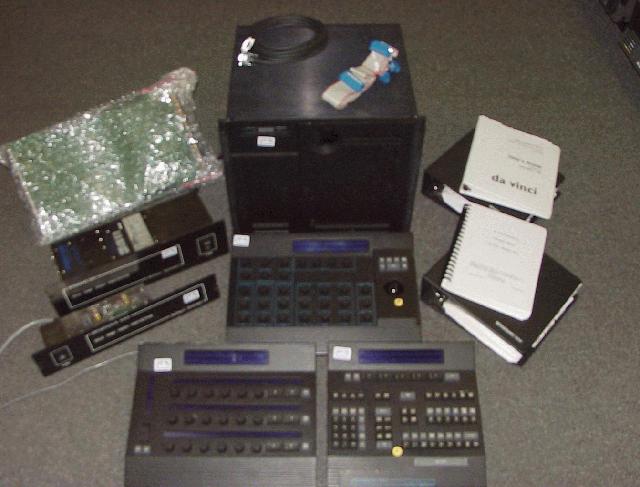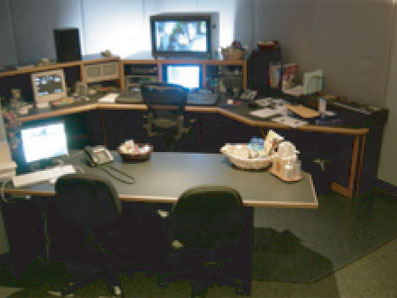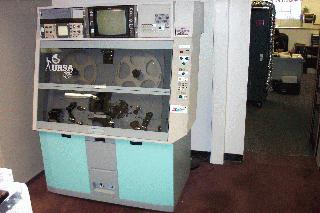Hello All:
Was wondering if any could help with some questions that I just can't seem to find research on about the wonderful world of HD.
1.As most of us HD owners know, when it comes to gettting HD through our cable boxes there are channels avaiable in both standard and HD. For example, HBO normal and HBO HD. I noticed that on some of these channels, the movies dont look as clear and sharp as lets say Sports Broadcast or Live Concerts. Does this have anything to do with the camaras that are filming the movies/events. I was under the inpression that a certain camara was used for HD presentations. If this is true, does that mean the most movies are not shot in true HD. Does this also mean that this movies are upconverted to be in HD quailty. Which would bring me to my next question
2.If movies arent shot in true HD, and are somehow upconverted, then is Blu/Ray technology really worth it. I havent seen anything in Blu Ray, yet if even thing has to be upconverted anyway, wouldnt it make more sense to just go with a HD DVD upconverting player. Is there such a huge difference that it makes Blu-Ray worth a thousand dollar investment?
3.Finally I noticed that my HD channels, even when showing a standard broadcast in 4:3 format, still looks better then my standard channel. For example if I watch lets say "The Peoples Court" on Fox standard channel 7, then switch over to FOX HD channel 230, the difference is like night and day. The picture is so more vivid, and even though the presentation isnt in HD, it seems like the cable box or my TV is trying to upconvert to a better signal. I do have a upconverstion option on my TV and even though I use it, I can t tell a difference until I switch to a HD channel that is showing a non-HD broadcast. Is the TV or cable box doing some kind of upconversion.
A lengthy post, but would love to see what this is all about. Anyone with any knowledge on this subject to give feeback would be helpful THANS 8)
+ Reply to Thread
Results 1 to 11 of 11
-
-
1: Compression is king. They would all look great if they were not so compressed. Some channels compress more than others.
2: For the most part movies have plenty of resolution. HD is less resolution than film. Except for some REALLY old movies and a few films shot poorly for a reason.
Great article here for #2 http://www.soundandvisionmag.com/interviews/671/restorer-of-the-star-wars-trilogy-and-...ohn-lowry.html
3: the SD version you are watching is compressed more while the HD version is compressed less. Also, the HD version is presented in "HD" meaning more colors and more resolution to start with.
FYI: these answers are bare bones. Check that article.Don't give in to DVD2ONE, that leads to the dark side. -
I don't know much about US cable, other than the few shows that trickle through over here, so I'll let that one go through to someone else.
HD-DVD and BluRay are essentially the same thing in different boxes. They are not the same as an upconverting DVD player. A standard DVD player that unconverts normal DVDs to HD is not HD-DVD. And while the quality can be quite good with a good unconvertor, it is not the same as true HD-DVD.
With the exception of the few movies shot on video, HD doesn't really enter into movies. Movies are shot on film. A few are now being shot on HD digital (Lucas, Rodreguiz et al) and these are true HD from source until they are printed on film for display. For HD-DVD and BluRay the the original HD digital source will be used for encoding. Movies, on the otherhand, are not HD or SD. HD doesn't enter into it until the movie is scanned into a digital form.Read my blog here.
-
Are you talking about the HD channels only? We can use HBO and PBS as examples.Originally Posted by ThomasGore3rd
First, film exceeds HDTV resolution but not all films have been retransfered to HD with modern equipment. Most of what you see on HBO would be film based and have at least gone through a digital Rank Cintel (or equivalent) film scanner in the last 15+ years. Much of that was recorded to D1 or Digital Betacam (720x480 4:2:2) in either 4:3 pan/scan or 16:9 widescreen. True 1920x1080i HDTV transfers have been done since the mid 90's usually to HDCAM tape (telecined 2x compressed 8bit, 1080i, 3:1:1).
More recently "Digital Cinema" level transfers have been made and these are stored as digital data usually at 4Kx2K or 4kx4k 12 to 16bit. These are theatrical release quality. From these, 1080i or 720p tape copies can be ordered for TV broadcast.
There are three levels of video that wind up on the HD channels of these two networks.
1. Upscaled 4:3 SD - HBO does alot of this. PBS almost never does. These would be played (to the server) from a Digital Betacam machine which can upscale to 1080i during playback. Upscaled 4:3 SD would have the side pillarboxes.
2. Upscaled 16:9 SD - These would be the most available transfers for movies. HBO and PBS have been mastering most of their own shows to SD 16:9 for some years in anticipation of HD. PBS is honest about labling these shows "widescreen", not HD.
3. True 16:9 1080i HD - If a movie, these would have been transferred in HD and typically recorded to HDCAM. TV Series like "Sopranos" would be shot on film and edited to HDCAM. Documentaries, sports or reality shows would be shot on anything from film to the various HD acquistion standards (HDV, XDCAM, DVCProHD, HDCAM). Quality can vary from consumer level to movie quality.
BD/HD DV are mastered from 1920x1080 (2Kx1k) or higher digital transfers as 1080p video. They are higher quality than what HBO puts on but your HDTV probably isn't good enough to show the difference.Originally Posted by ThomasGore3rd
DVD player upscaled 720p or 1080i is far below the quality of upscaled Digital Betacam. Digital betacam is only 3x compressed and every frame is recorded at that quality. DVD is compressed >20x and has long GOPs between I frames.
Typical cable SD is 3-5Mb/s MPeg2 where the HD channels are 14-25 Mb/s MPeg2. The difference you see is the amount of compression. It would look even better in the TV station off the 44Mb/s network feed and even better than that off the 144Mb/s HDCAM playback.Originally Posted by ThomasGore3rd -
Thanks to all! This is all really interesting information. Had no idea of all the processes film or video had to go through to get presenting in HD. It all makes perfect sense though. Great example that I forgot about is that Pink Floyd recently releae"Pulse" which was I believe their 1993 concert tour. It was shot on video, not film, since Gilmour thought it wasnt going to be released in the movie theater, laserdisc was a dead format, and everything was coming out in VHS format. The quality of the film is horrible, even though I am sure they tried to do what they could with it, remastering wise, but still doesnt look half as good as Floyds Live at Pompeii, which was shot in 1971, yet on Film, and looks great in the 16X9 widesceen presentation. To make a long story short, it looks like the source from where movie/concert is coming from, still makes a difference, even after it is converted for HD. Maybe when HD becomes the standard, they will have even better technology, and be able to convert over without any grain or error in pictures, even with a crappy source. I am sure Blu Ray is on its way, since it seems from everyones post that the compression is low, so maybe when that format dies, (god I hope it does, does everyone really feel like converting everything over to another format, it was a pain in the neck enough with VHS...hahah) this will become the STANDARD in DVD....Thanks to all AGAIN!
-
Part of the issue with film is that while good film stock, well preserved, can produce incredible images that HD digital cannot yet match, the quality of the stock varies, as does the processing and the quality of the masters. In many cases masters simply don't exist any more, so the stock that is digitized may be several generations removed from the source, and in poor condition. If you get the opportunity, watch the restoration documentary for Hitchcock's Rear Window. While it is discussing the incredibly complex world of chemical restoration, it gives a very good run down on how the projection stock was produced, and why many of the films we have are often in less than pristine condition.
With Pulse, it depends again on what they used as their source. Was it the original video masters, or digitized from film stock that had come from these masters, or are there several generations in between ? It can all hurt the image you eventually get.
I do know that some of the restoration work, both chemical and digital, has resulted in a quality even on DVD, that far surpasses the quality of the projected versions I have seen in the cinema. Alien on DVD is a much better image than I saw on it's release in '79, as is Lawrence of Arabia.Read my blog here.
-
Once again interesting stuff. Not to sure about the release of Pulse. Since I really dont know anything about the film or video process, I would compare it to lets say someone using a camcorder. Another example I can think of is from the movie "Boogie Nights" when Burt Reynolds gets upset that "pornos" were going to be shot directly to VHS, and film would no longer be used because the other fomat is cheaper, so to say...but the quality stinks. I think they tried to clean up the concert, but of course, but didnt do a great job, as I mentioned even Gilmour was upset it wasnt shot on Film.. I guess as you say if the source is bad in the first place, there is nothing you can do, or minimal restortation can be done? Yet, the sound was done in 5.1 Dolby, which I am assuming they might have re-mastered. It seems that as technology gets better, the more they might be able to do with the converting process. Hey remember when CD's first came out, and or some CD's you got that message, This recording was orginally recorded on analog equipment. Some source of the tape hiss might be heard. (or something along those lines) Then years later, we have alot of those CD's remasted, such as CD's from the Police. What a difference from the orginal CD release. The volume is so much better, and no hiss. Yet, I am assuming maybe it is easier with music to restore, then film
-
As for film restoration this would be basic ...
A used DaVinci Renaissance 8:8:8 color corrector will set you back $39,000 - 70,000
http://www.broadcaststore.com/store/model_detail.cfm?id=20440


A used Rank Cintel flying spot scanner will be in the $100K range. Then there is the HDCAM deck ~$60K.
It starts to add up to real money. New it would all cost over $1 million.

-
One thing not mentioned, you said sports broadcasts look better than HD movies.
A huge factor in live or sports broadcasts is that they almost always shoot in interlaced mode.
Now, this gives a very fluid motion, because you are actally seeing 60 pictures. Well, they are all half res and interlaced, it's all a big illusion that people "think" is clearer and more fluid.
While film is always more res. Regardless of 1080i or 1080p. Because, in 1080i mode, the second field is merely updating the full resolution of the 1080 image. Where in interladed mode, the second field differs from the first field so you are getting 2 half resolution pictures for 1 full frame.
LOL! I'm terrible at explaining that, but it's true and all makes sense if you understand it
-
Yes, for live broadcast 1920x1080i produces a field every 1/59.94 sec.
ABC and FOX use 1280x720p (progressive) which sends a full frame every 1/59.94 sec.
In both cases, the motion resolution is 59.94 fps. Film on the other hand is natively 23.976 frames per second. 480i and 1080i use "telecine" field repeats to build to 29.97 frames per second. 480p and 720p repeat full frames in 3-2-3-2 sequence to build to 59.94 frames per second for transmission. Even though "refresh" is ~60hz, film motion resolution is still ~24 fps giving film more jerky motion than live video.
In PAL areas, 1080i produces a field every 1/50 sec.
Similar Threads
-
Questions on Hauppauge HD PVR recordings to DVD/Blu-Ray
By Quaker2001 in forum Capturing and VCRReplies: 2Last Post: 26th Jan 2010, 23:13 -
Can I rip Blu Ray Discs with LG Super Multi Blu-ray Disc and HD DVD-ROM Dri
By donpato in forum Blu-ray RippingReplies: 5Last Post: 5th May 2008, 17:05 -
Playing Blu ray & HD dvd on 42" hdtv
By namronthegreat in forum Media Center PC / MediaCentersReplies: 5Last Post: 7th Feb 2008, 20:23 -
3 important questions about hd-dvd and blu-ray disk?
By mohannad_j in forum Newbie / General discussionsReplies: 20Last Post: 7th Nov 2007, 16:34 -
Backing up DVR HDTV to Blu-Ray w/DVD audio track
By pulsation in forum DVB / IPTVReplies: 8Last Post: 15th Jul 2007, 04:54




 Quote
Quote